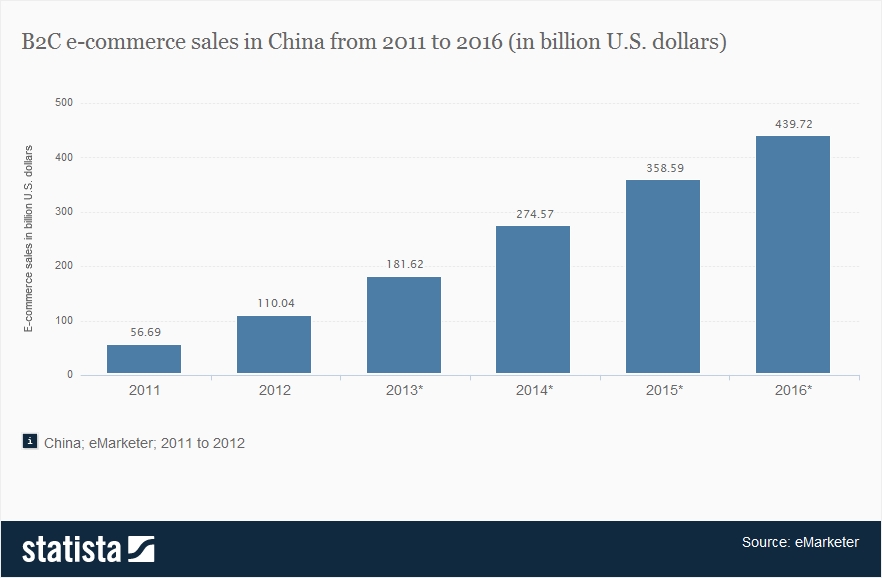
A growing middle class and increase of infrastructure expanding into rural areas is increasing the Ecommerce market within Mainland-China. Moreover, this growth is complemented by the desire for authentic brands that are foreign and more sophisticated than many of the local products available on the market. The challenge that many manufacturers and retailers face is how to effectively and efficiently enter the market despite cultural and language differences that serve as a substantial market-entry barrier. This article is designed to outline what steps you should take in order to successfully enter the market and build a reputation that the local market has an insatiable demand for.
Transition: Building a Brand that Consumers Demand
The nature of transitioning a brand from any market to the Mainland-China market may require adaptation. The success of a brand entering the market has largely been guided by the company’s ability to adapt the branding to the specific market. For instance, Red Bull created an entirely different label and Chinese name for its product. It is also stored in a different size can with different coloring that resonates with Feng Shui colors. The traditional silver and blue can convey self and compassion rather than the dark orange and red can used signifying future and relationships. The beverage manufacturer realizes that relationships, or Guanxi, plays a critical role Chinese society. Without establish trust and Guanxi, customers are not as likely to purchase your product.
Placement: Getting Your Product on the ‘Right Sites’
In case you are not already aware, Alibaba Group, is the leading Ecommerce conglomerate of Mainland-China. What you may not know is that they own many more websites than the wholesale website, Alibaba.com. For instance, Taobao focuses on the retail market and TMall focuses on premium retail brands. In other words, if you have a premium brand, placing your product on Taobao and not on TMall or vice versa could lead to a poorly positioned product that misconstrues your brand identity. Even though the conglomerate is certainly the largest, they are not the only website and should certainly not restrict your efforts. Be sure, however, that you obtain an appropriate .CN extension with an Asian webhost and have the site in Pinyin if you hope to seriously compete on Baidu.
Fulfillment: Get Your Products to Far Reaching Consumers
There are some things you should know about logistics within Mainland-China if you are to fulfill products to your customers. Although there is a centralized post office, the best logistics are privately owned by the Ecommerce companies that created them. Alibaba has invested into developing its own supply chain, focused on extending its network to make it more efficient than the centralizes post office and further reaching. It now has access to a wider radius by establishing new routes so that you can sell to citizens that would otherwise not be able to access your product. This can be relatively surprising to companies unfamiliar with a delivery service owned as a vertical supply chain by the retailer, as not even Amazon has gone to this extent. With this fact known, be aware that if you’re competing with the existing platforms, they may be able to beat you on fulfillment consistency and price. It may be wise to adjust your pricing strategy in a way that enables the accommodation for this fact.
Support: Caring for Your Customers
Tech savvy millennials are increasingly global and fluent in both English and Mandarin, or more in many cases. However, the majority of people within the country still do not speak English. They also have strict cultural customers and ways of communicating that if violated, can spell disaster for your company. The primary thing to understand when dealing with support for customers is to provide a personalized experience and establish trust. By this, you are nurturing a reputation that will drive customer loyalty. Amazon already realizes the importance of this in the United States, by providing a personalized shopping experience in stellar customer support. This fact should certainly carry over if customers call you, as a retailer of manufacturer, to address a problem or ask a question. This means hiring someone fluent in multiple dialects and ideally having them in-house, as working with an outside provider can cause a loss of control.
Make note that not all brands are right for the Chinese market. For instance, Pro Business Plans, a service provider, found that the market was not willing to pay the same market prices as consumers in its US market. The same problem manifests itself in the software industry, where piracy rates are very high. Therefore, companies should test the market before determining the holistic viability of the entry and determine if the market will generate appropriate returns on any investment allocated towards its expansion.





![Binance Review: How the Crypto Exchange Works [2024]](https://www.feedroll.com/wp-content/uploads/2024/03/binance-trading-100x100.png)



